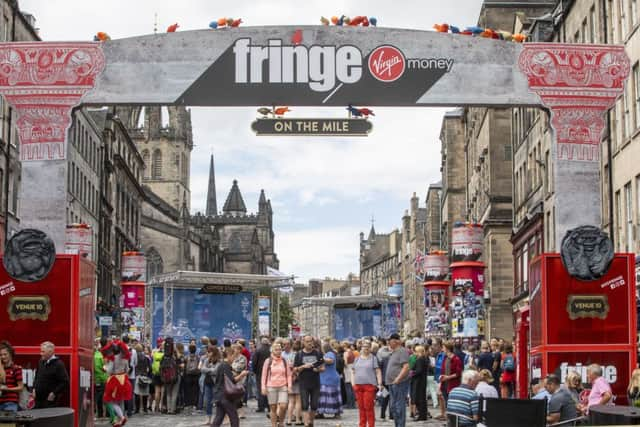Radical road closures to cut risk of Edinburgh Festival accidents
Some of the busiest hot-spots will be closed to cars, buses and taxis for all or part of the day from the end of July until early September under radical proposals aimed at reducing the risk of “overspill” of pedestrians into oncoming vehicles.
However, city leaders said they would tie in with their long-time ambitions of making the city a “more attractive, people-friendly place, prioritising walking and cycling”.


Cameras will be installed at ten locations to monitor the impact of the temporary measures, which have been in the planning by the city council, the police and transport operators for nearly two years.
They will see new sections of the Royal Mile, as well as Victoria Street, Cockburn Street, Hunter Square and Blair Street, sealed off to traffic for the first time in August.
A temporary crossing is being introduced outside the Pleasance Courtyard.
East Adam Street will be closed to traffic to try to improve safety outside one of the busiest Fringe venues.
A night-time car ban in the Cowgate is being extended to start at 7pm, three hours earlier than normal, while Candlemaker Row will be closed to all vehicles except the No 2 Lothian Buses services.
However, closing most of the Royal Mile is expected to lead to the re-routing of the No 35 service, while a lane of traffic on South Bridge is to be removed to ease congestion problems.
The measures have been drawn up in response to growing demand to tackle traffic congestion and safety fears during peak periods from heritage bodies, community groups and environmental campaigners.
However, business leaders have raised fears about the impact of “disrupted deliveries and lost trade” on firms within the affected areas.
In a report for councillors, place director Paul Lawrence said: “The proposals bring significant change to the way the Old Town operates, with many benefits for the most vulnerable users of our streets, including young and old pedestrians, and those with limited mobility or sensory impairment.
“The measures required to achieve this rely on changes relating to vehicle access, limiting where and when people can drive through streets, park, access businesses by car, load and service businesses. As far as possible, measures have been devised to minimise the impacts of these changes on residents and businesses carrying out day-to-day activities.”
Council transport convener Lesley Macinnes said: “We’re very fortunate to live in such a popular, vibrant city, boasting an excellent calendar of events and world-famous attractions.
“However, with this comes the pressure of ensuring the safety and well-being of the many residents and visitors who pass through our streets every day.
“These temporary measures will reduce pressure on busy pavements, making it much easier for residents to carry on with their daily lives, whilst creating a more relaxed, welcoming atmosphere at a time when Edinburgh is at its busiest.
“This ties in with our broader aims to make Edinburgh a more attractive, people-friendly place, prioritising walking and cycling.”
The Living Streets Edinburgh group, which campaigns for better conditions for pedestrians in the city, has been lobby the council to make radical changes to accommodate festival crowds for several years.
Convener Don Nicholass-McKee, said: “We’re delighted that the council appears to have finally seen the sense of our proposals. Every summer narrow pavements on key streets in the Old Town and beyond get yet more dangerously crowded, with folk spilling out on to the vehicle carriageway, with the obvious risk of accidents.
“This should be seen as just as the start of a long-term programme to transform the city’s streets. We would like to see vehicle bans – but with bus routes protected – further rolled out after the first phase in August.
“Vehicular traffic has to be reduced on more and more streets if walking is to become much safer, as well as more enjoyable – and if air quality targets are to be met. And the safety and health benefits of vehicle restrictions (including car bans) have to be available all year, not just in August.
“We’re pleased that the council is beginning to take on board the walking agenda – but there is a very long way to go before Edinburgh can be described as a truly pedestrian-friendly city.”
However Garry Clark, development manager for the Federation of Small Businesses, said: “City centre businesses are getting a bit fed up with the constant attacks by the council on traffic movement.
“Some businesses will, of course, welcome what could be an additional flow of pedestrians, but for others there will be disrupted deliveries and lost trade. It’s time that the council took all perspectives into account before making these decisions.”